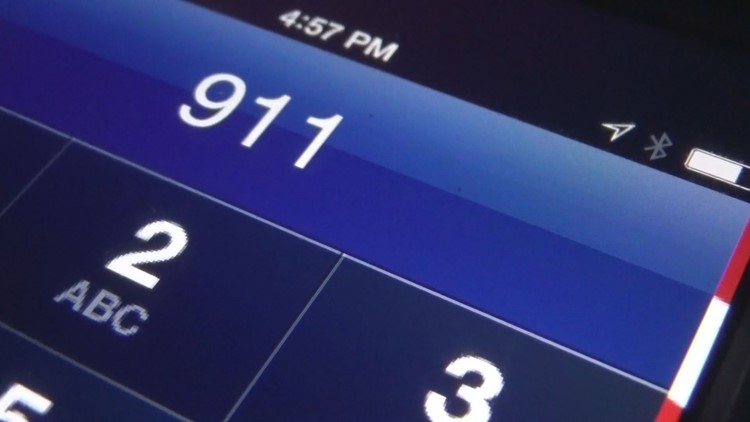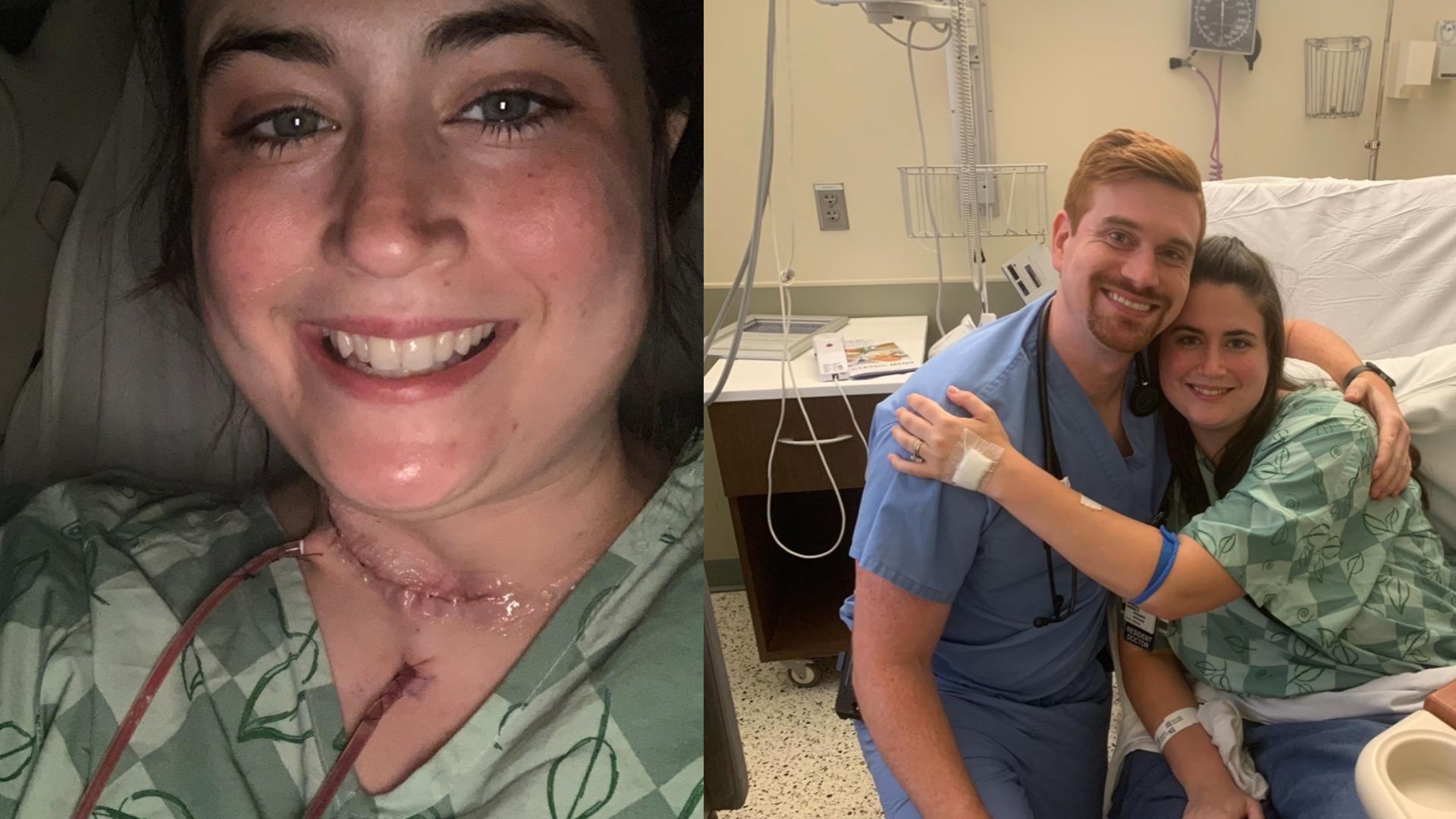(WXIA) -- Shanell Anderson's final words exposed fatal flaws in the nation's 911 system, but now the 11Alive Investigators have discovered AT&T precisely located the pond where Shanell was drowning just 33 seconds after she called 911.
Then why did it take rescuers a half hour to find her inside her sunken car?
It turns out neither the emergency dispatcher nor AT&T's 911 hotline could see the automated location the phone company had already transmitted to Alpharetta 911.
Thirty-one-year-old Shanell Anderson was delivering newspapers at 4 a.m. on December 29 when she accidentally veered into a pond at the intersection of Batesville Road and The Fairway in Cherokee County. Her call to 911 went to Alpharetta 911 because the nearest tower compatible with her phone was across the line in Fulton County.
Dispatchers at Alpharetta 911 could see only the tower address in Milton, not the address of the pond. During Shanell's one and a half minute call to 911, she used her last breaths answering the dispatcher's repeated requests for the intersection. Shanell knew where exactly she was, including the zip code, but because Alpharetta's maps stopped at the county line, the dispatcher's computer wouldn't display the location.
Now we know that the same software flaw prevented the 911 maps from displaying the latitude and longitude returned by Shanell's cell phone through AT&T's automated location service. The dispatcher had Google Maps as a back up, but did not think of switching to a web browser to plug it in.
Firefighters and police from two counties searched ponds several miles around the tower location for 20 minutes before they found the right one. Shanell was in full cardiac arrest when rescuers pulled her from the water about 10 minutes later. She never regained consciousness and later died in a hospital.
During eight and a half minutes of that search, the primary 911 dispatcher was stuck on the phone with AT&T's National Compliance Center in hopes the company could locate Shanell's cell phone. The hotline at AT&T is staffed 24 hours a day to handle requests from law enforcement and 911 centers having trouble locating victims.
Even though it's staffed around the clock, the AT&T hotline is answered first by a recording delivered in a slow monotone where the option for a "life or death" 911 emergency is the last selection, not the first. When the Alpharetta dispatcher called on that fateful morning, it took 10 seconds just for the hotline to answer, followed by another 20 second recording similar to one you might hear when calling a customer service line.
"Your call may be monitored and recorded for quality purposes. You have reached the AT&T National Compliance Center of AT&T and the asset protection client services after-hours response center. If you are calling from a 911 emergency center, or if this is a life-and-death matter, press four."
The dispatcher pressed the number four and waiting for another ringing line to be ansered. Based on the timeline, Shanell's car and her phone were likely underwater during this entire call.
"AT&T Compliance, this is Judy, how can I help you?," the operator answered.
Keep in mind that at this point both Alpharetta 911 and AT&T already had the location of Shanell's phone, but because of the way the systems were set up at the 911 center and the phone company, neither the dispatcher nor the operator could see where Shanell was. In short, the call should have been unnecessary.
The dispatcher explained that she needed the location of a 911 caller.
AT&T Operator: "OK, it was a 911 hang-up?"
Alpharetta Dispatcher: "No, it's a female drowning in a lake somewhere."
AT&T Operator: "Ooh (keyboard sounds), Alright, and you're wanting subscriber information?"
Alpharetta Dispatcher: "Subscriber and location."
AT&T Operator: "Alright hold on please.."
(HOLD MUSIC)
That's right, the operator put the 911 dispatcher on hold after hearing the caller was "drowning in a lake somewhere."
The modern jazz hold music lasted for three minutes and 10 seconds before the AT&T operator came back on the line.
AT&T Operator: "Alright, thank you for holding."
Alpharetta Dispatcher: "Yup."
AT&T Operator: "It's a TracPhone so we don't have subscriber. I tried pinging the phone once already, and it came back that it's turned off or it's in a location that cannot be pinged. I'm going to try one more time, OK?"
Alpharetta Dispatcher: "OK, thank you. Shoot."
During the eight and a half minute call, the 911 dispatcher was placed on hold three separate times for a total of more than four minutes. During the hold music, the dispatcher was calling out to her colleagues in the 911 center, and to units in the field still searching for Shanell's submerged car.
The call with AT&T's hotline ended only when firefighters found the pond on their own.
Alpharetta Dispatcher: "We think we found the vehicle, or skid marks."
AT&T Operator: "You guys found the vehicle?"
Alpharetta Dispatcher: "We found skid marks, so, to the lake, so. OK, I gotta go. Thanks."
AT&T Operator: "OK, bye bye."
Alpharetta Dispatcher: "Bye."
In January, the 11 Alive Investigators launched a months-long investigation of problems locating cell phone callers during emergencies. Shanell's story was the focus of a front page article in the print editions of USA Today, and several Gannett television stations did their own investigations after hearing Shanell's call for help.
We discovered deadly gaps in the nation's 911 system, the largest being the way 911 calls are routed. As in Shanell's case, all cell phone calls to 911 are routed based on the cell tower's location, not the phone's location. Many towers are near the borders between jurisdictions, and 911 center directors have to decide which center will get a call hitting each side of those towers. Even though technology exists to send a cab or a pizza right to your phone's location, 911 does not take advantage of that smart phone technology.
Our investigation also showed weaknesses in the proprietary maps used by 911 centers when those maps don't extend into the next jurist diction. With calls routinely reaching the wrong 911 center, the need for broader maps was clear.
The Investigators also discovered frighteningly low percentages of 911 calls actually sent the phone's location to dispatchers. In some 911 centers, more than 70 percent of cell phone calls came in with no other location than the tower address, which could be miles from the victims. Federal Communications Commission benchmarks now call for locating only 80 percent of all cell phone callers with six years, despite a 1996 regulation that had required carriers to locate 95 percent of GPS enabled phones calling 911.
The FCC promised to encourage development of a universal 911 app for smart phones after seeing our series of reports.
Also after our investigation, AT&T reached out to tell us that their records showed a positive location for Shanell's phone 33 seconds after she called 911. Alpharetta 911 conducted a forensic search at our request and confirmed its computers received the latitude and longitude of the pond in less than a minute. Because the maps stopped at the county line, the GPS coordinates would not plot on the dispatcher's screen.
In the end, it didn't matter that AT&T had found the phone because neither the 911 dispatcher nor AT&T's own operator could see that result on their screens.
The chief of Alpharetta's 911 center tells The Investigators that Alpharetta's proprietary maps have been extended about five miles beyond the city limits in every direction. All dispatchers there have been trained in handling emergencies involving sinking cars.
AT&T declined our requests for an interview and a tour of its national 911 hotline in Florida. The company has not said if it plans to shorten the recording on the emergency line, or to move the 911 option to the beginning of the outgoing message.
Shanell's sister, Tiffany, put it this way: "You know my sister could be you, this could be your neighbor, this could be your mom, this could be your sister, this could be your dad. This is not isolated at all," she said.



